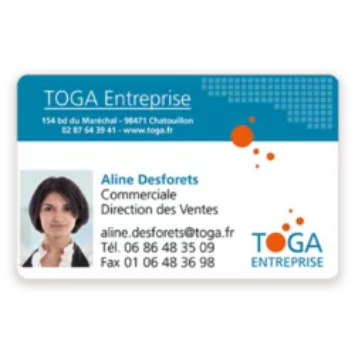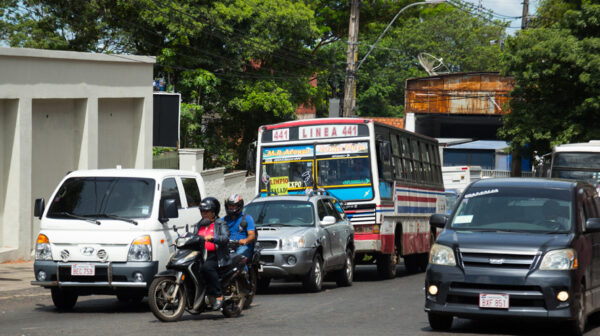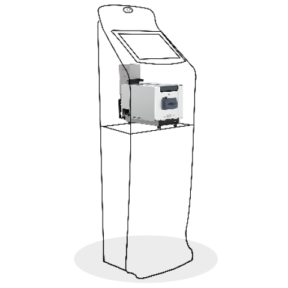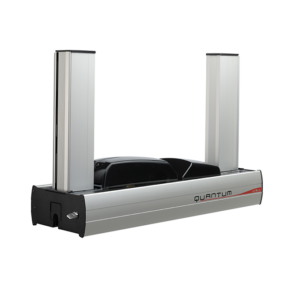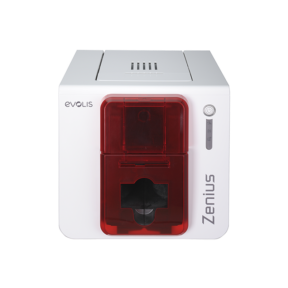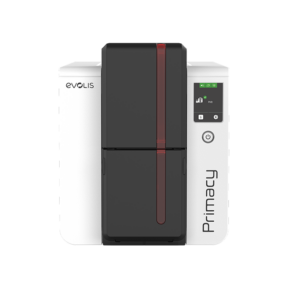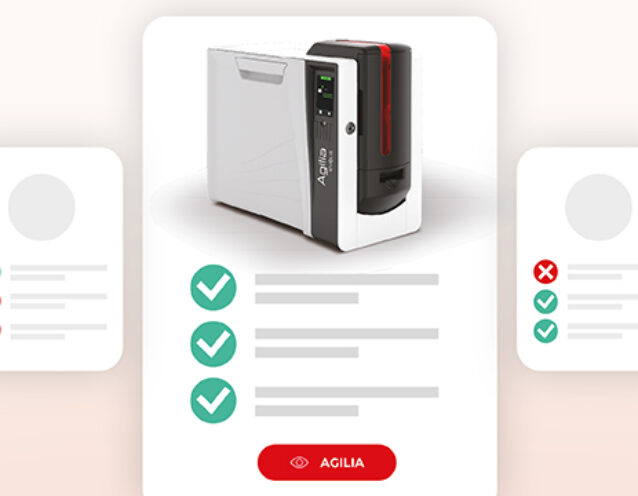Government
Create and Print Citizen ID, Health Card ID, Licence ID Card
Evolis printing and encoding solutions allow governments to deliver highly secure official documents and to prevent counterfeiting of identification cards.


Identify your project to identify the right equipment.
A project to issue official documents on cards is characterized by the category of its target population. In other words: who are the cards intended for? There are two main types of government card printing projects: projects aimed at a specific target population and those on a national scale.
Projects aimed at a target population.
In this type of project, the group of people is, most of the time, defined according to socio-demographic or professional criteria. It may target, for example, all the inhabitants of the same city, people of a certain age, or even those in a certain profession (police card, military card, etc.). By providing them with a personalized card, you allow them to make use of the various services, advantages, privileges, or rights available to them. The card serves as official physical proof that they belong to the defined group.
In this type of project, the volume of cards issued is relatively small, which makes instant card printing all the more suitable. You can print these cards responsively, on demand, and issue cards instantly to the target persons. A very interesting method of gaining access to the target population.
Projects on a national scale.
These projects target the entire population of a country. The number of cards issued is often very large, ranging from a few thousand to several million. It may be printing national identity cards, driver’s licenses, health insurance cards, voter registration cards, etc. Some of these projects can be executed with industrial printers, in countries with the appropriate infrastructure in place. For countries that do not have adequate services, printing with desktop printers offers an obvious solution that is flexible and easy to deploy.
Centralized or instant printing?
Desktop printers are suitable for both centralized and instant printing.
For instant printing, the printers are dispatched to different sites. This allows the machines to be distributed geographically and makes the production capacity easily accessible and responsive.
Centralized printing is also possible with our card printers. In this configuration, they are all grouped together in the same place. Compared to industrial machines, the installation and commissioning of desktop printers is much faster, which is ideal for projects with tight deadlines. The production capacity can also be adjusted much more easily, by adapting the number of printers installed.

The advantages of desktop printers at every stage of official document printing.
Whether on a local or national scale, each project follows a 4-stage process, from recording personal data to the end use of the card.
Recording and managing personal data.
This stage begins with collecting data from the population. This data can include last name, first name, date of birth, but also biometric data via fingerprinting, for example. Desktop printers can then integrate this data directly into the card of the future user, providing graphic personalization by means of the printing function, and electrical personalization via various encoding options.
Producing the official document.
Graphical and electrical personalization is not always enough to produce a finalized, ready-to-use card. For reasons of security and durability, lamination with patches and varnish may be required, possibly including holographic elements. All functions that can easily be performed instantly by a card printer.
Distributing the official document.
In a decentralized instant printing system, the card is printed and immediately issued to the user. Distribution is not dependent on a postal service—depending on the country, this can be more or less reliable (loss or theft of mail) and can involve very long delivery times. With an instant card printing solution, the rate of registered people who actually receive their card tends towards 100%.
Using the official document.
The issued official document is then put to more or less regular use, as the case may be. These official documents usually have a relatively long lifespan, so the medium used should also be highly durable. Thanks to the lamination option available on some printers, the document can last up to 10 years.

Concrete responses to the challenges faced by governments.
There are different issues to take into account in the production of these official documents:
- Promoting inclusion to offer the same rights to everyone,
- Guaranteeing the security of documents to reduce fraud,
- Producing high-quality documents,
- Limiting the cost of official documents.
Promoting inclusion through inclusive distribution.
Inclusion is a central criterion because it reflects equality between all inhabitants. It means that everyone can access the same services and have the same rights. So how can we ensure that as much of the population as possible can access official documents and thus prevent any form of discrimination? The answer to this question lies for the most part in choosing an inclusive mode of distribution.
The best way to handle this decisive stage of distribution is to deliver the official document by hand. This ensures the correct distribution of the document in question, unlike the use of a postal service, which involves the risk of non-delivery. Card printers organized for decentralized printing are particularly suitable in this case as they allow cards to be issued instantly.
They are compact and easy to install, making them very flexible and permitting several usage options:
- In different locations, spread across the country: particularly suitable for countries consisting of several islands or with geographically separated regions. This can be implemented via self-service terminals.
- Using a portable solution (e.g. in a case): makes it possible to cover vast countries with large areas and low population density. The printers used for this kind of project are fully autonomous and make use of solar energy. They also have a protective cover to withstand transport conditions (dirt, sand, earth, etc.).
These 2 modes of use both address transport issues and thus promote access to the entire population.
Producing secure documents using the appropriate technologies.
The issue of security for governments when producing official documents is two-fold:
- Guaranteeing a secure production process
- Producing a final document with the required level of security
The instant issuance of official documents with card printers meets these 2 objectives. This equipment can be secured using different types of locking systems. This prevents access and therefore theft of consumables (cards and ribbons), as well as rejected, undistributed cards, which could then be used for fraudulent purposes.
Printed data can also be protected. Thanks to technologies such as digital scrambling and ribbon scrambling, data is neither stored in the printers nor readable on the ribbon.
The decentralized instant printing of cards also avoids the use of suppliers, who are often located outside the country. This local production allows countries to independently retain control of their populations’ data. The government is then completely independent in producing its official documents, and has access to a more secure process that doesn’t rely on any third party.
All these personalization options can be combined, which further strengthens the security of the document. So you can strike the right balance between the desired level of security and your budget. The cost of verifying the authenticity of the document depends on the security elements used on the card:
- Security features visible to the naked eye: quick and easy visual authentication, which does not require equipment or training.
- Security elements invisible to the naked eye: authentication using simple equipment (magnifying glass, torch, UV lamp, infrared lamp, laser pen, etc.).
- Expert security elements: authentication using complex laboratory equipment, which requires a high level of skill and expertise.
Ensuring the quality of the documents issued.
The quality of the official document is equally important. It should:
- Strengthen document security,
- Project an official and modern image,
- Guarantee the durability of the document over several years.
A plastic card will last a long time and endure handling well. Depending on the finish, it can have a lifespan of up to 10 years (thanks in particular to a lamination module). This is a real advantage because official documents often have to be retained for a very long time.
A high-quality photo is necessary to ensure the effective identification of the document holder and thus reinforce the security of the card. The quality of the cards issued also depends on the printing technology used. Edge-to-edge printing, superior print sharpness, etc. Depending on the desired appearance, you have the choice between D2T2 technology or retransfer.
Plastic cards also naturally benefit from an official and high-quality image in the eyes of the population. As a result, they also contribute to the satisfaction of the population.
Achieving these goals while optimizing costs.
One of the major challenges for governments is the budgetary aspect. Although the various objectives mentioned above are undeniably important, the financial aspect remains unavoidable. Compared to industrial printers, a fleet of desktop printers allows for better cost optimization at all stages of the product’s life:
- Purchase and installation: desktop machines can be acquired very quickly (depending on the supplier) because they benefit from a faster manufacturing process than large series machines. Once purchased, they can be rolled out easily and installed quickly.
- Use: the use of desktop machines is simple and does not require special skills. Their intuitive handling makes it possible to quickly launch print jobs, unlike large series printers which are generally more complex.
- Maintenance: the maintenance of card printers is very simple, whether it’s changing the ribbon, reloading cards, or performing repairs. And of course, while you perform maintenance on one printer, all the others remain operational. This guarantees continuity of service, which is not the case with a single industrial machine.

Self-service terminals for issuing official documents.
Card printers can also be integrated into self-service terminals. These terminals allow users to easily perform various operations independently. These terminals allow official card documents to be printed and renewed instantly. The process is thus accelerated and fully automated. The terminals can be deployed throughout a country, in order to cover the most remote locations, i.e. in rural areas.
These terminals are developed in partnership with expert system integrators, and additional functionalities can be integrated to complement card printing, perfectly adapted to your needs.
Electronic signature tablets: simplify processes, optimize costs.
The production of official documents often requires a citizen’s signature. Paper signatures involve many constraints: long process (printing, scanning, storing, sending), difficult to find the paper document quickly once archived, significant cost associated with the necessary equipment (paper printer, paper, ink, scanner, etc.), non-optimal security of inhabitants’ data, etc. The solution to these constraints is the use of electronic signature tablets.
«”All the advantages of electronic signatures”
Unique solution for a unique project.
Our team of engineers, dedicated to researching and implementing your projects, has supported governments for more than 20 years. Whatever the scope and complexity, they make use of all their expertise to realize your project. This is why we are able to offer completely customized solutions.
Our goal: a successful project.
No matter how complex your IT installation is, our card printers can be adapted to your project. For configurations that require system integration, we work with our integrator partners to deploy your solution according to your needs and constraints. Our card printers can be used with all types of applications already in place.
For needs that are not covered by our standard range of printers, our dedicated project team is committed to offering you a completely customized solution.
Discover

